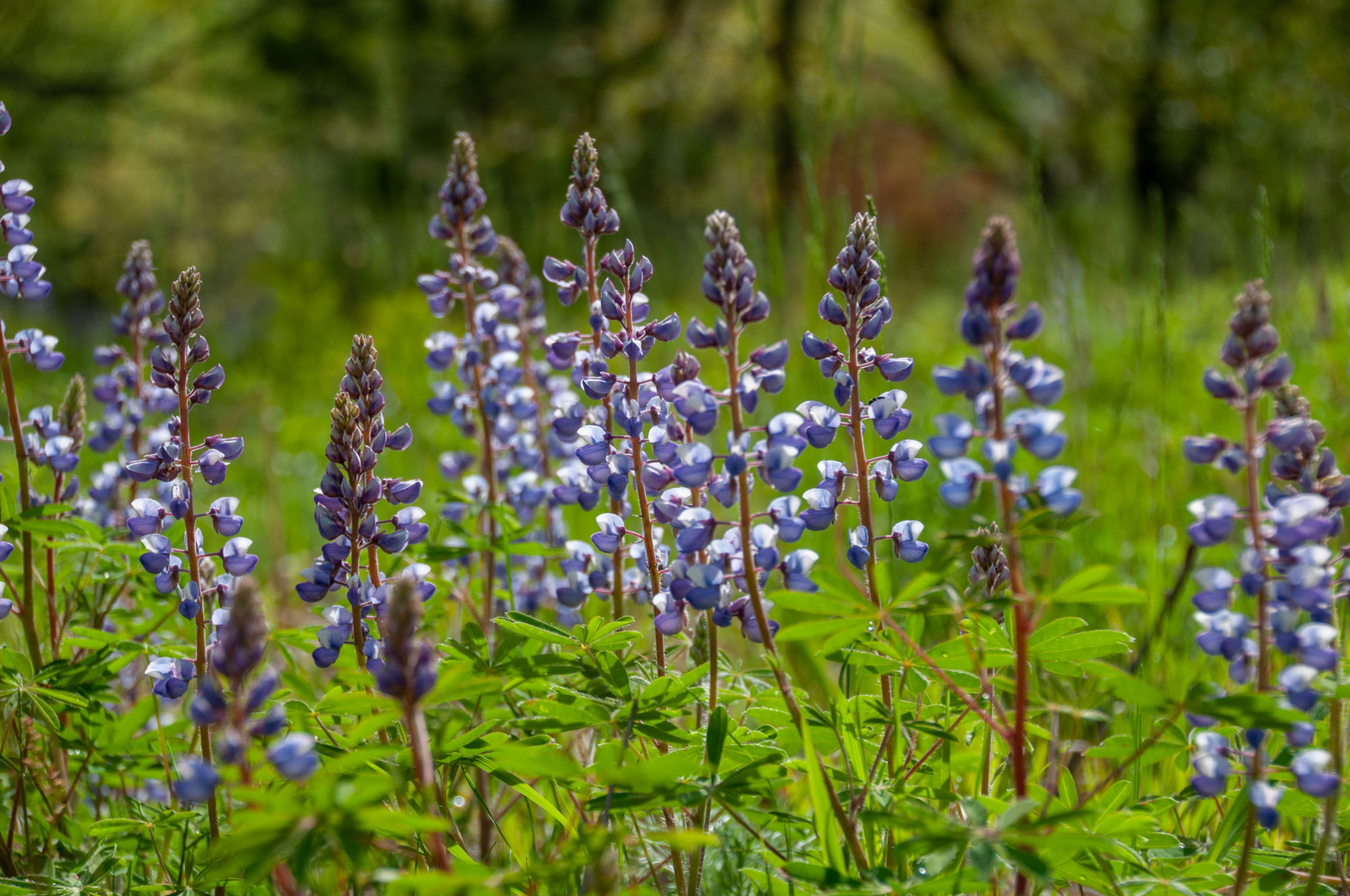
In it for the long haul: How three LCWM conservation easement owners are proactively caring for their land
The Land Conservancy of West Michigan works with many property owners to help protect privately owned natural land. Through conservation easements, we are able to ensure West Michigan forests, habitat corridors, and wetlands remain connected and undeveloped.
The process can be long and is not always easy. But for Land Conservancy conservation easement holders, it is a labor of love—one that doesn’t stop when the property is protected. Ensuring the continued health of natural lands takes proactive work. Earlier this fall, we spoke to three landowners who are working with experts to manage their land to be healthy and resilient.
Elisa Rasmussen and her late husband Richard initially decided to pursue placing a conservation easement on their land because they wanted to ensure the forest surrounding their cabin was not lost to divergent family interests. The 22-acre Lake County property is located close to M-37 and on the Little South Branch of the Pere Marquette River, a very popular fishing destination. In the wrong hands, it would risk being subdivided and developed.
“We thought, who is going to make sure that the land doesn’t get subdivided and that the trees close to the river don’t get cut, so that we don’t affect the temperature of the water,” Elisa said. “There has to be something to protect the forest and the animals that live there.”
The couple worked with the Land Conservancy to ensure the permanent protection of their stretch of wild river and the magnificent oaks and towering white pines that surround it. Richard became interested in the health of the forest and began experimenting with thinning out small trees that were overcrowding the forest.
“He bought himself a pair of loppers that he called ‘Freddy,’ and he went with Freddy cutting down small seedlings,” Elisa said.
The couple watched the way those small changes allowed for the oaks to produce more acorns, attracting more wildlife for them to watch from their cabin.
In 2012, the Rasmussens decided to work with a consulting forester to establish a plan to support a healthy and productive forest. With the forester’s help, Elisa and her husband established some goals for their land.
“I’m reading here, in my husband’s handwriting, the goals: Forest health, sustainability, a legacy, diversity of flora and fauna, fire suppression, recreation, exercise and firewood for the cabin,” Elisa said.
Life happened, and the plans were paused for a while. Richard fell ill with ALS, and his treatment became their sole focus. He passed away in 2015.
Now, Elisa is working with Conservation Easement Stewardship Specialist Nick Sanchez to get the ball rolling again. She hopes her sons will help pursue the goals she and her husband set and become the next stewards of the forest.
When Manuel Butzow and his wife bought their forested Muskegon County property, they found their friends had other ideas about what they should do to it.
“We had some people mention that, ‘Wow, you bought 60 acres. You guys could make a ton of money; you could subdivide that,’” Manuel said. “That was the last thing we wanted to hear.”
Though it was in rough shape, the couple valued the natural character of the landscape and couldn’t imagine splitting it up to sell for a profit.
The Butzows learned about the Land Conservancy of West Michigan and conservation easements when they attended a presentation at the White Lake Library.
“Just as soon as we had an opportunity with the Land Conservancy to get into their program, that’s exactly what we did. We just couldn’t envision taking advantage of the land,” Manuel said.
The Butzows completed the conservation easement in 2005. Restoring the land had always been a plan, but busy work schedules kept them from actively working on it.
Now that he’s retired, Manuel has been able to start digging into the project.
The Land Conservancy helped the Butzows understand what the land was like before it was a Christmas tree farm.
“One of the things we found out, that back many years ago it used to be an oak savanna area, which is exactly what we have north of us,” Manuel said. “That’s what the Land Conservancy encouraged us to do with the land.”
Characteristic of such habitats, lupine is already abundant and endangered Karner blue butterflies are known to spawn on the property.
With funding from grants, and help from some friends and neighbors, Manuel has begun removing old, non-native Scotch pine trees and planting native plants like big bluestem, Indian grass, coreopsis, black-eyed Susan and many more.
Manuel enjoys the work.
“I’m out every day,” Manuel said. “It’ll be a lifelong retirement project.”
Paul Busman was offered the opportunity to purchase the 40-acre property next to his on one condition: that he didn’t split it up to sell.
“It was an easy promise to keep,” Paul said.
The Busmans used their Ottawa County property to breed sheep. They improved parts of it over time and camped on it with their kids. In 2014, the Busmans worked with the Land Conservancy to establish a conservation easement and ensure no future owner of the land would be able to subdivide it, keeping Paul’s promise in perpetuity.
“Once a year, the Land Conservancy walks the property with us. They’re making sure we’re living up to our part of the contract and maintaining it as we said we would, but they also offer good suggestions about what we can do better, which I really appreciate,” Paul said.
The forest on the property has become overcrowded and there are some invasive species that need to be removed. On the recommendation of Land Conservancy staff, Paul connected with a consulting forester to develop a staged forest stewardship plan, a fuller picture of the long-term risks and ecological opportunities for the land.
“Jason Darling (the forester) came out and did a survey, walked and sketched the whole property out, characterized it by water, wetlands, tree constituencies, density and those kinds of things,” Paul said. “After that, Jason took his materials back and he worked up a 120-page document describing all these areas, what his suggestions would be and the timeline.”
The actions will take place over many years and include hunting to reduce deer populations, removing invasive species like autumn olive and oriental bittersweet, noncommercial tree thinning and encouraging the growth of trees like swamp white oak, sugar maple, beech and cherry.
The plan will be reviewed and approved by the state, resulting in a property tax reduction. Then the Busmans can get to work.
“It’s exciting. (Jason) really showed me better ways to control the invasives, which is really important to me,” Paul said.
Working with Jason and the Land Conservancy of West Michigan has helped shaped Paul’s understanding of how to care for his land. He knows the work is an active, life-long endeavor.
“The forest isn’t static,” Paul said. He acknowledged that climate change will likely have an impact on his woods. “How can we best practice and manage, to not necessarily keep it the same, but achieve the objective of a diverse, productive woodland? I think this is my best way of accomplishing that.”





